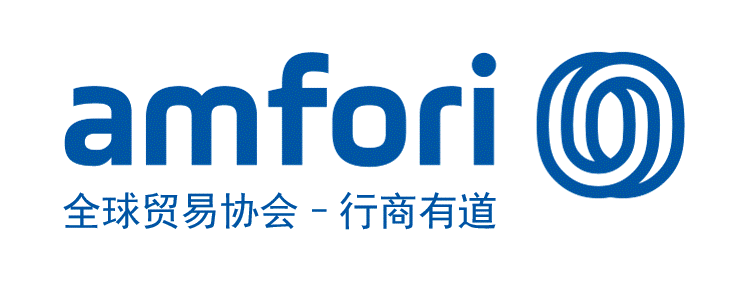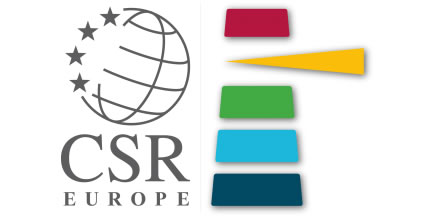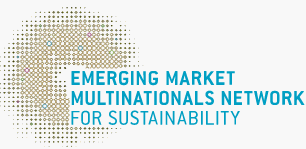Home > Best Practices > Best Practices List >
Tetra Pak China: Innovation Promotes the Sustainability of Packaging Recycling Industrial Chain
2015-11-17Sino-Swedish Corporate Socialadmin0010
Company Profile
As one of the large-scale suppliers of milk, juice, beverage and many other products packaging system, Tetra Pak is able to provide comprehensive processing equipment, as well as packaging and distribution production lines. It is also an international company providing design proposals for liquid food production plants.
Established in 1951, the Swedish Tetra Pak company entered Chinese market in 1972, following the philosophy of “Growing with Chinese Customers”. Currently, Tetra Pak has invested 3.765 billion yuan in total in Chinese market, and set up 4 world-class aseptic paper packing material production plants in Beijing, Foshan, Kunshan and Hohhot with a total design capacity of 60 billion packaging bags, playing an important role in China’s liquid food packaging field.
Challenge
According to the statistics, the amount of China’s annual packaging waste is about 16 million tons, and the number is still soaring at the speed of over 1.05 million tons annually. However, the recycling rate is below 20% of the total output of packaging products, which has led to tremendous waste.
Though Tetra Pak’s raw materials to produceaseptic composite paper packaging could realize a recycling rate of 100%, currently China has not established a reasonable garbage classification system, and consumers have not cultivated a very good habit of garbage classification. As a result, there are few companies able to putthe recycled paper packaging into commercial use. In China, lacking of recycled waste packaging is a challenge for thepackaging recycling and reuse industry.
Solution
Since 1998, Tetra Pak China has established its environmental protection teamresponsible for the R&D and promotion of Tetra Pak packaging’s recycling and reuse. For over a decade, Tetra Pak China has invested 150,000,000yuan in total in this field, constantly improving the resource recycling and reuse rateand putting resources back where they were.
Promoting Recycling and ReuseTechnology
Foreign countries invest tremendously in the recycling and reuse of aseptic composite paper packaging, which has led to high costs. Therefore, this cannot work for domestic recycling and reuse enterprises, for most of them are small and medium sized enterprises.
To cope with the situation, Tetra Pak has joined hands with experts from Liaocheng University in Shandong Province and Shandong TianyiSynthetic Resin Company to develop the Chinese aluminum-plastic separation technique, providing an all-round support forengineering, equipment procurement, financial assessment, production test and application promotion. In 2010, Tetra Pak successfully promoted and implemented economical, efficient and environmentally-friendly aluminum-plastic separation technique. The technology also dealt with waste water and gas effectivelywith special equipment andthe whole process conformed to the environmental standards of Tetra Pak.
Developing Recycling and Reuse Enterprises
Since 2004, Tetra Pak has carried out in-depth cooperation with dozens of paper packaging recycling and reuse enterprises, and helped them to build or improve technology standards via technological and financial support so as to enhance their production technology and conduct market promotion.
Conducting Recycling and Reuse Training
In China, the major force in community recycling system is a great number of dustmen and junkmen. However, they are badly-organized and lack of knowledge in recycling and reuse field. Since the end of 2006, Tetra Pak has cooperated with large-scale recycling companies and provided training for those people so that they could understand the recycling value of waste beverage packaging and continue to recycle wastes.
Moreover, Tetra Pak China and its partners also carried out “Pickup King” competition for milk and beverage packaging, giving material and spiritual encouragement to outstanding junkmen and dustmen.
Disseminating Environmental Protection and Recycling Philosophies
Tetra Pak China has carried out various forms of publicity and educational activities on environmental protection and recycling, so thatthe traditional disorderly flow ofwaste aseptic composite paper packaging will be changed and the waste paper packaging could enter the recycling and reuse system.
Since 2007, Tetra Pak has conducted “Green Life Starts from Me”—milk and beverage paper packaging recycling educational campaign in a number of primary schools in Beijing for consecutive 3 years. In May, 2008, an100-meter-long environmentally-friendly davenport, made from over 120,000recycled waste Tetra Pak packaging donated by Tetra Pak appeared in the Olympic Forest Park. In June, 2009, Tetra Pak joined hands with Shanghai World Expo Coordination Bureau and other units to hold “Green Davenport for Green World Expo”—milk and beverage paper packaging community recycling campaign. In May, 2011, Tetra Pak launcheda public welfare campaign “2011 Garbage Classification” together with Center for Environmental Education and Communications of Ministry of Environmental Protection and Packaging Recycling and Reuse Alliance, shared garbage classification knowledge with the public via the low-carbon and environmental disseminating channel—internet, and call on people to take environmental actions, which yielded great effects.
Achievements
Tetra Pak China has utilized its expertise and strong influence in the industry, cultivated anindustrial chainof aseptic paper packaging recycling and reuse, and explored the best development pattern for this industry: a resource-to-resource industrial chain. With the joint efforts of Tetra Pak, related government agencies and partners, the recycling of Tetra Pak packaging has been increasing year after year. The total amount of recycled milk and beverage paper packaging increased to 139,000 tons in China in 2013, which indicated that about 17 billion 250ml standard Tetra Pak packaging had been effectively recycled and reused.
Aluminum-plastic separation technique is a milestone solution that not only enhances the value of recycling and reuse of the packaging, but also breaks the bottleneck of the sustainability of the recycling and reuse industrial chain. As a result, every link in the industrial chain could benefit from it, such as Tetra Pak and its partners. In March, 2009, the first aluminum-plastic separationproduction line was officially put into practice at Hangzhou Fulun Ecological Technology Co., Ltd. By the end of 2009, the recycling value has increased by 30%, with the monthly sales revenue growing by 25%.
Currently there are a dozen milk and beverage paper packaging recycling and reuse enterprises in Beijing, Shanghai, Hangzhou, Shenzhen and Shandong Province. Theamount of packaging recycling is growing year after year. From nearly zero in 2003 to 139,000 tons in 2013, the recycling rate hasbeen up to about 25%.
Tetra Pak initiates to establish a garbage classification system and organize various environmental protection events, which has effectively promoted the public’s recognition and enthusiasm for the recycling and reuse of packaging resources, and created a sound social environment to lay emphasis on and support the recycling of renewable resources. In this way, it has promoted people’s understanding and favorable impression of Tetra Pak China and created a friendlier environment for the brand’s further development in Chinese market.
Prospect
In the future, Tetra Pak China will continue to accomplish its mission, make use of the good resources worldwide, take the unique characteristics of China and develop the recycling and reuse technology, which will invest more societal forces and resources tothedevelopment of the recycling and reuse system. Tetra Pak China will make efforts to lead and promote the recycling and reuse of packaging industry and make further contributions to China’s economic, environmental and social development.
As one of the large-scale suppliers of milk, juice, beverage and many other products packaging system, Tetra Pak is able to provide comprehensive processing equipment, as well as packaging and distribution production lines. It is also an international company providing design proposals for liquid food production plants.
Established in 1951, the Swedish Tetra Pak company entered Chinese market in 1972, following the philosophy of “Growing with Chinese Customers”. Currently, Tetra Pak has invested 3.765 billion yuan in total in Chinese market, and set up 4 world-class aseptic paper packing material production plants in Beijing, Foshan, Kunshan and Hohhot with a total design capacity of 60 billion packaging bags, playing an important role in China’s liquid food packaging field.
Challenge
According to the statistics, the amount of China’s annual packaging waste is about 16 million tons, and the number is still soaring at the speed of over 1.05 million tons annually. However, the recycling rate is below 20% of the total output of packaging products, which has led to tremendous waste.
Though Tetra Pak’s raw materials to produceaseptic composite paper packaging could realize a recycling rate of 100%, currently China has not established a reasonable garbage classification system, and consumers have not cultivated a very good habit of garbage classification. As a result, there are few companies able to putthe recycled paper packaging into commercial use. In China, lacking of recycled waste packaging is a challenge for thepackaging recycling and reuse industry.
Solution
Since 1998, Tetra Pak China has established its environmental protection teamresponsible for the R&D and promotion of Tetra Pak packaging’s recycling and reuse. For over a decade, Tetra Pak China has invested 150,000,000yuan in total in this field, constantly improving the resource recycling and reuse rateand putting resources back where they were.
Promoting Recycling and ReuseTechnology
Foreign countries invest tremendously in the recycling and reuse of aseptic composite paper packaging, which has led to high costs. Therefore, this cannot work for domestic recycling and reuse enterprises, for most of them are small and medium sized enterprises.
To cope with the situation, Tetra Pak has joined hands with experts from Liaocheng University in Shandong Province and Shandong TianyiSynthetic Resin Company to develop the Chinese aluminum-plastic separation technique, providing an all-round support forengineering, equipment procurement, financial assessment, production test and application promotion. In 2010, Tetra Pak successfully promoted and implemented economical, efficient and environmentally-friendly aluminum-plastic separation technique. The technology also dealt with waste water and gas effectivelywith special equipment andthe whole process conformed to the environmental standards of Tetra Pak.
Developing Recycling and Reuse Enterprises
Since 2004, Tetra Pak has carried out in-depth cooperation with dozens of paper packaging recycling and reuse enterprises, and helped them to build or improve technology standards via technological and financial support so as to enhance their production technology and conduct market promotion.
Conducting Recycling and Reuse Training
In China, the major force in community recycling system is a great number of dustmen and junkmen. However, they are badly-organized and lack of knowledge in recycling and reuse field. Since the end of 2006, Tetra Pak has cooperated with large-scale recycling companies and provided training for those people so that they could understand the recycling value of waste beverage packaging and continue to recycle wastes.
Moreover, Tetra Pak China and its partners also carried out “Pickup King” competition for milk and beverage packaging, giving material and spiritual encouragement to outstanding junkmen and dustmen.
Disseminating Environmental Protection and Recycling Philosophies
Tetra Pak China has carried out various forms of publicity and educational activities on environmental protection and recycling, so thatthe traditional disorderly flow ofwaste aseptic composite paper packaging will be changed and the waste paper packaging could enter the recycling and reuse system.
Since 2007, Tetra Pak has conducted “Green Life Starts from Me”—milk and beverage paper packaging recycling educational campaign in a number of primary schools in Beijing for consecutive 3 years. In May, 2008, an100-meter-long environmentally-friendly davenport, made from over 120,000recycled waste Tetra Pak packaging donated by Tetra Pak appeared in the Olympic Forest Park. In June, 2009, Tetra Pak joined hands with Shanghai World Expo Coordination Bureau and other units to hold “Green Davenport for Green World Expo”—milk and beverage paper packaging community recycling campaign. In May, 2011, Tetra Pak launcheda public welfare campaign “2011 Garbage Classification” together with Center for Environmental Education and Communications of Ministry of Environmental Protection and Packaging Recycling and Reuse Alliance, shared garbage classification knowledge with the public via the low-carbon and environmental disseminating channel—internet, and call on people to take environmental actions, which yielded great effects.
Achievements
Tetra Pak China has utilized its expertise and strong influence in the industry, cultivated anindustrial chainof aseptic paper packaging recycling and reuse, and explored the best development pattern for this industry: a resource-to-resource industrial chain. With the joint efforts of Tetra Pak, related government agencies and partners, the recycling of Tetra Pak packaging has been increasing year after year. The total amount of recycled milk and beverage paper packaging increased to 139,000 tons in China in 2013, which indicated that about 17 billion 250ml standard Tetra Pak packaging had been effectively recycled and reused.
Aluminum-plastic separation technique is a milestone solution that not only enhances the value of recycling and reuse of the packaging, but also breaks the bottleneck of the sustainability of the recycling and reuse industrial chain. As a result, every link in the industrial chain could benefit from it, such as Tetra Pak and its partners. In March, 2009, the first aluminum-plastic separationproduction line was officially put into practice at Hangzhou Fulun Ecological Technology Co., Ltd. By the end of 2009, the recycling value has increased by 30%, with the monthly sales revenue growing by 25%.
Currently there are a dozen milk and beverage paper packaging recycling and reuse enterprises in Beijing, Shanghai, Hangzhou, Shenzhen and Shandong Province. Theamount of packaging recycling is growing year after year. From nearly zero in 2003 to 139,000 tons in 2013, the recycling rate hasbeen up to about 25%.
Tetra Pak initiates to establish a garbage classification system and organize various environmental protection events, which has effectively promoted the public’s recognition and enthusiasm for the recycling and reuse of packaging resources, and created a sound social environment to lay emphasis on and support the recycling of renewable resources. In this way, it has promoted people’s understanding and favorable impression of Tetra Pak China and created a friendlier environment for the brand’s further development in Chinese market.
Prospect
In the future, Tetra Pak China will continue to accomplish its mission, make use of the good resources worldwide, take the unique characteristics of China and develop the recycling and reuse technology, which will invest more societal forces and resources tothedevelopment of the recycling and reuse system. Tetra Pak China will make efforts to lead and promote the recycling and reuse of packaging industry and make further contributions to China’s economic, environmental and social development.
Best Practices
- The 100-year brand — Air Liquide also has a sense of juvenile
- Beijing Public Transportation Corporation: Developing green transportation to build a harmonious and livable capital
- CGN: Building a modern factory in barren deserts and developing a new win-win cooperation model along “Belt and Road”
Upcoming Event

All the materials on the site “Source: XXX (not from this site)” have been reprinted from other media. They do not imply the agreement by the site.
All the materials with “Source: CSR-China Website” are the copyright of CSR-China Website. None of them may be used in any form or by any means without permission from CSR-China Website.
GoldenBee Official WeChat
Copyright © Csr-china.net All Right Reserved.
京ICP备19010813号










